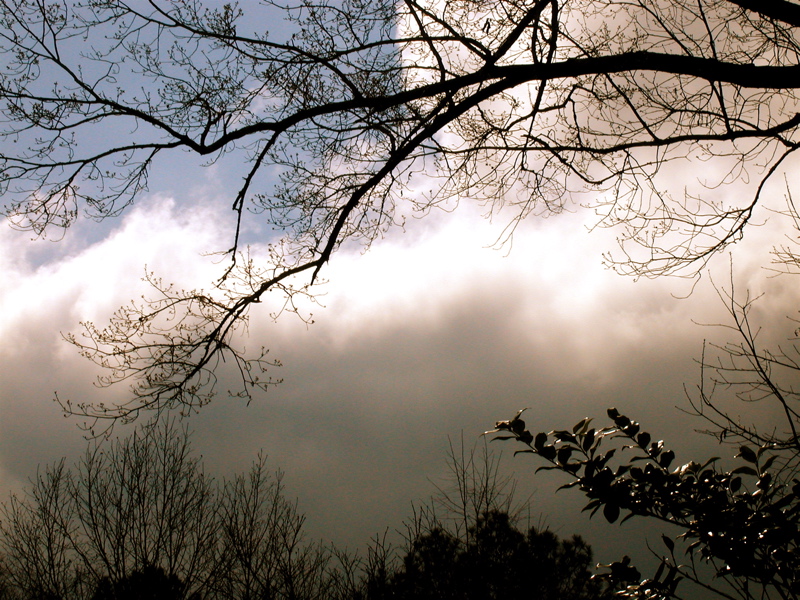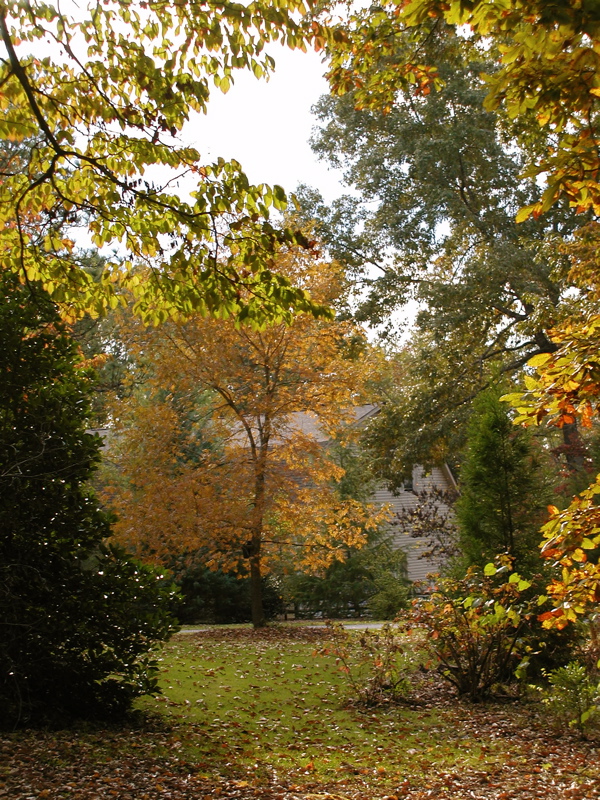About Trees
 Wednesday, November 10, 2010 at 4:00PM
Wednesday, November 10, 2010 at 4:00PM I love trees! I can honestly say I have contributed to the environment by planting my share. Trees provide sustenence and food for wildlife and provide building materials, food, and even medicine for us humans.
Trees have a true symbiotic relationship with humans. We, of course, breathe in oxygen and breathe out carbon dioxide, while a tree absorbs carbon dioxide from the air, as much as a ton in its life time, and gives off oxygen. In one year a couple of trees can produce enough oxygen for a family of four, and even man's carbon emissions from automobiles can be balanced by lining a road with trees.
There exist ancient trees that have towered over the rise and fall of civilizations and still live into the twenty-first century, but the average life expectancy of the modern urban tree is about eight years. Why is that? I suspect multiple reasons. Perhaps the trees that succumb at an early age are planted in small planting holes completely surrounded by asphalt and concrete. What do the roots find under solid surfaces? How much water is there, and what sort of soil organisms grow in such an environment? And how hot do the roots become in the summer? In truth, only ten percent of a tree's nutrients come from the soil, while ninety percent comes from the air. So, what about air pollution? Smoke and other contaminants may coat leaves, making it difficult for them to absorb water and nutrients. Maybe the trees are chosen because they are cheap or they are trendy, but they aren't right for the space or maybe they are prone to disease. I suspect another cause of early death is lack of care. Trees are planted and then often forgotten. Who waters them during drought or fertilizes them when needed? Some communities care for their trees, but I suspect many cities just don't have it in their budget. So city trees have to be tough. There are plenty that do survive, and who doesn't appreciate the beauty they contribute to hard urban edges?
Trees also prevent soil erosion by stabilizing the soil and by slowing and filtering rain water. Ever notice those naked hillsides where developers have stripped the land and then did little or no replanting? It should be against the law! Before long, the slopes are covered with deep vertical gouges from water run-off, and this puts the land below at risk for flooding.
Trees increase property values; some estimates say up to twenty percent. Here in the South trees are especially valuable for the shade they produce. They reduce air conditioning costs in the summer and make an outdoor space more enjoyable. Not only do the trees block the hot sun, but water actually evaporates through their leaves, thus reducing the air temperature below. Trees can also provide windbreaks and reduce heating costs in the winter, and they can be used to provide privacy or screen unwanted sights.This Arizona cypress helps to screen a neighbor's workshop.
Even when a tree is dead, its stump may continue to provide nutrients and shelter to multitudes of animals and small organisms, until finally it decays and returns to the earth, helping to replenish the soil. Following our tornado in 1990, we cut the trunk of an uprooted oak tree into segments. We placed the sections of the trunk in a grouping in the woods, providing a great dining hall for wildlife. After twenty years, some parts have rotted away, but some remain:
And after all that, trees are beautiful. This time of year I appreciate their beautiful foliage: This Chinese pistache tree is loveliest in its fall colors.
This Chinese pistache tree is loveliest in its fall colors.Top: Woodlands behind the Lady Garden. 2nd row: Japanese maple; dogwood. 3rd row: Trident maple leaves silhouetted against the sky; Evergreen Southern magnolia leaves will make great holiday decorations. Fall and winter may be the best time of the year to appreciate trees' interesting forms:
1st row: trees in woodland garden; Japanese maple in front garden. 2nd row: Japanese maple "marriage tree", photo taken last winter; shot taken last March of what I fondly call the "nostril tree", located in Atlanta's Piedmont Park. 3rd row: winter photo of tree in woodlands beside lower lawn; winter photo of trees behind house.This is also a great time to notice many different bark textures and patterns:
Top: trees in the woodland garden. 2nd row: This crepe myrtle has watermelon pink blooms through the summer, but now its lovely form and peeling bark draws attention. 3rd row: river birch; trident maple. 4th row: close ups of river birch and trident maple, showing their exfoliating bark.
As a reminder, for those of us who live in milder climates, fall into winter is a great time to plant trees. And remember, when you are out there working hard to dig your hole, you are doing a good deed for us all!
